We may receive a commission on purchases made from links.
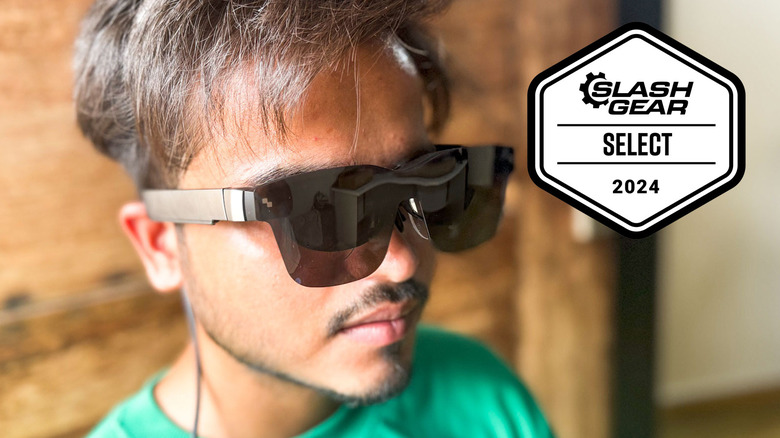
Nadeem Sarwar/SlashGear
RATING : 8 / 10
- Bright display with ample colors and sharpness
- Stylish looks
- Light and comfortable
- Fantastic pocket TV accessory
- Seamless plug-and-play
- Nice quad-speaker setup
- Core controls bound to physical buttons
- Computing software needs a lot of work
- Lack of macOS support
- Mobile apps require more tools and content
- Prescription lens situation is a bit tricky
- Dynamic shimmers and a bit of edge fuzziness
- USB DisplayPort situation mandates an adapter
This is no ordinary set of specs. This is a pair of augmented reality glasses made by the brand RayNeo — not the most well-known name out there when it comes to making XR (extended reality) hardware, unless you are familiar with the brand’s association with TCL. Brands aside, what we’ve got here is the most advanced set of smart display glasses the company’s released thus far. And this isn’t the first time we’ve had a pair on our review bench.
Advertisement
When I tested the RayNeo Air 2 in 2023, one of the biggest issues that I ran into was peripheral blurring, which is a massive turn-off, irrespective of whether you plan to play games, watch Netflix, or fancy yourself some Windows computing. This year, RayNeo has an upgraded Air 2S model on the shelf. The company has made some crucial audio-visual improvements on this one, and they are easy to discern in the first go compared to the Air 2 from 2023. The latest trim is also more comfortable, even though the looks are more or less identical.
I went into the review process hoping the software situation had improved in 2024, and with reduced expectations of what one should expect from «display glasses.» Unfortunately, I ran into some familiar issues, once again. At $400, these glasses seem to excel where it matters the most, but a tad out of touch in areas where they could’ve made a leap and left an indelible mark. RayNeo sent me a pair of Air 2S glasses to test for this review.
Advertisement
Build and feel
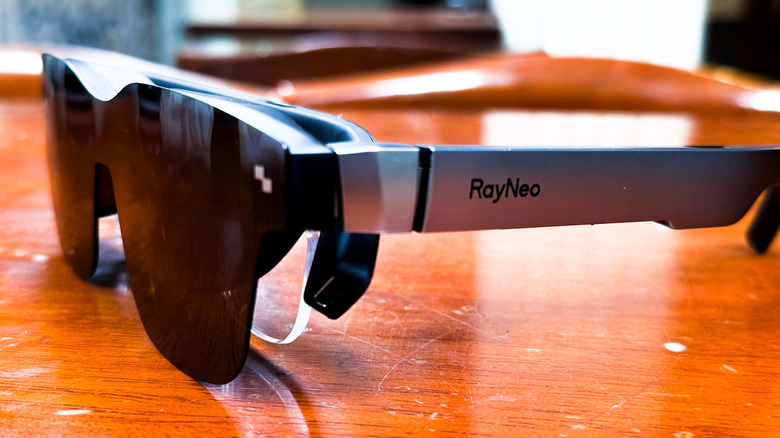
Nadeem Sarwar/SlashGear
RayNeo hasn’t strayed too far away from the Air 2’s looks, and barring some minor tweaks, the Air 2S looks more or less the same. But there are some thoughtful design changes this time around. You get three levels of vertical temple adjustment and paired with the X-axis freedom, these glasses are significantly more comfortable to wear. Furthermore, the nose pad also offers three levels of adjustment, even though you only get nose pads supplied in the retail package.
Advertisement
I love working with AR glasses. Yes, the narrow field of view, close retinal proximity to a bright screen, and more head movement are some demands you must agree to, firsthand. Plus, you just might end up looking like some «out of touch with reality» nerd wearing these tethered to a computer in a public place. But we live in a world where Apple wants you to believe that wearing a certain Vision Pro headset is okay.
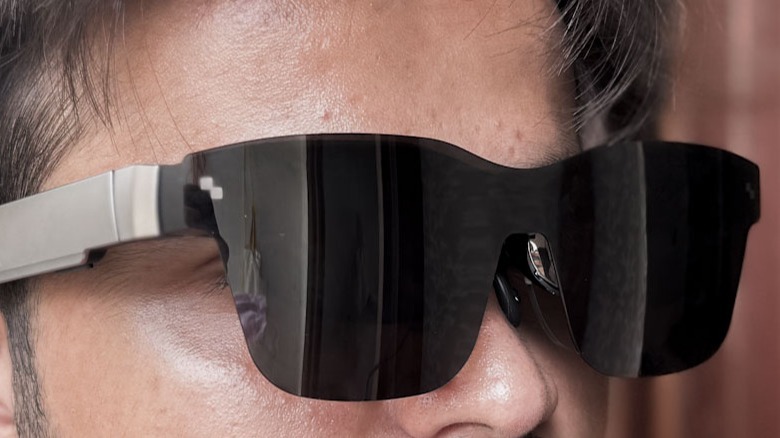
But I appreciate the temple flexibility on the Air 2S, and that’s supremely important if you seek the best visual experience without any edge blurring or warping. You really have to play with angle and width adjustments, as well as the positioning on your nose ridge to find an angle that works best for you.
Advertisement
Now, if you’re sitting still or slouching on a couch, the RayNeo Air 2S won’t bother you. But if you intend to lay down snug bean bag or your bed, you will have to make position adjustments once again, especially with the wire coming in the way. It’s not exactly a deal-breaker, but more of a necessary evil. Thankfully, at 78 grams (well under a pound), you won’t feel their weight as cumbersome, a huge relief from the pain of wearing XR headsets.
Controls
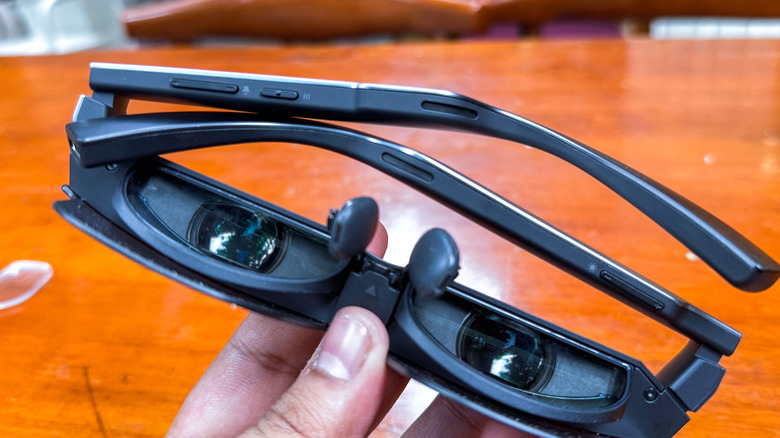
Nadeem Sarwar/SlashGear
Each temple has a button for volume and brightness adjustment, respectively. There’s also a menu button that lets you toggle between speaker whisper mode, change the refresh rate, and pick the display color mode. This button is actually a convenient addition, as it saves you the hassle of digging into the settings section of the app. In the hindsight, it’s a mandatory convenience, as the glasses don’t offer app compatibility for macOS.
Advertisement
But thanks to the hardware control, you can at least access these crucial options when the Air 2S glasses are plugged into a Mac. Another benefit is that all these adjustments happen in real time, so you can see how each color mode actually adjusts the visual profile of whatever it is that you are watching on the screen. For example, if it’s productively software like Docs and Office 365, I found the «Soft» profile to work the best as it offered a warmer tone that is easier on the eyes.
At videos and games, the «standard» leans closer to more neutral, true-to-life colors. The «Vibrant» profile strikes a middle-ground between the two. Refresh rate values are hard-coded at 60Hz and 120Hz, and when you switch using the menu button, there’s a momentary blackout. Notably, to switch between 2D and 3D viewing, you don’t have to dig into any obscure settings page as temple buttons once again do the job with a two-key shortcut.
Advertisement
Computing Experience
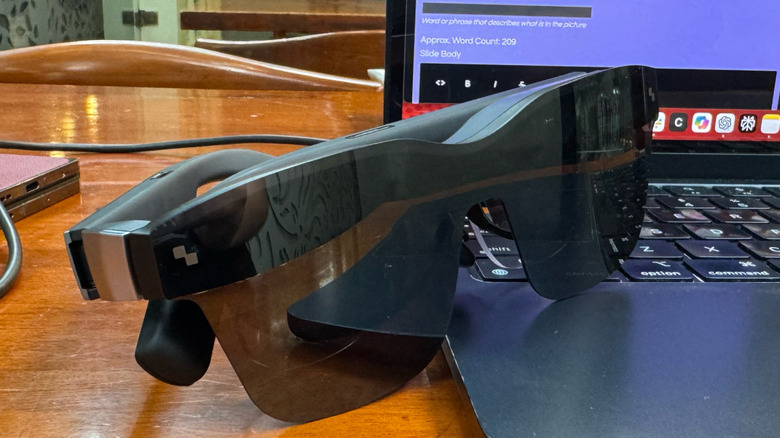
Nadeem Sarwar/SlashGear
Rhetorical and techno-fashionista diatribe aside, spatial computing with a pair of glasses like the RayNeo Air 2S is an acquired taste. If your workflow loves the convenience of multiple screens or you simply can’t abandon your expensive ultrawide monitor, carrying that convenience is your pocket is nothing short of a gift. I, for example, have at least six apps always running in direct view, so a multi-screen setup is a necessity for me.
Advertisement
But that necessity only translates to actual work with Windows. TCL’s Mirror Studio gets the job done, even though the interface has remained unchanged. And that’s not good news. I could run up to six floating windows in flat-screen or curved view format, with some eye squinting thrown in here and there. But you still can’t adjust the spatial distance or angle of app windows, even though the resizing controls are serviceable. And that’s just about it.
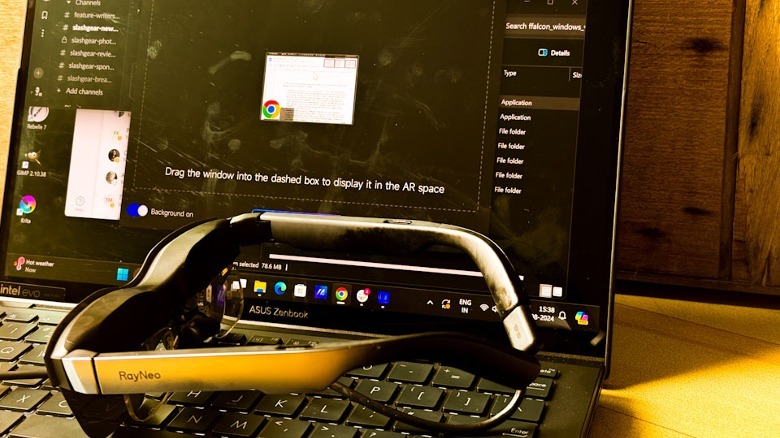
The cursor controls are a bit of a mess, you can’t even access basic Window tiling presets, and quick head movements result in some visible shimmering in some parts. There’s no anchor mode so the virtual windows could follow your head movements, which is supremely awkward. I desperately hope RayNeo fixes the Windows client, and maybe, add support for macOS. For Macs, the only saving grace is a rudimentary plug-and-lay screen mirroring experience that at least delivers a large and wide virtual monitor to work on.
Advertisement
Display
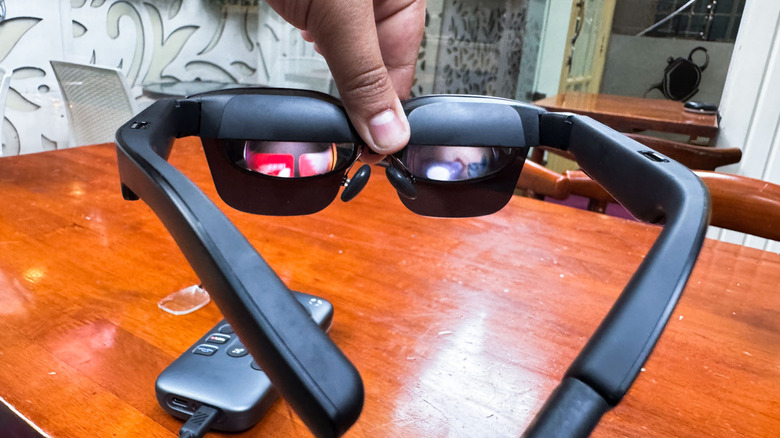
Nadeem Sarwar/SlashGear
RayNeo has fitted Micro-OLED display units on the Air 2, which offer full-HD brightness in flat mode, but scale up to 3840 x 1080 resolution in 3D mode. What you get is the equivalent of a 201-inch screen, one of the biggest out there, at a perceived distance from six meters.
Advertisement
Right off the bat, this is one of the brightest and sharpest panels you will find on a pair of display glasses in this price range. The peak brightness reaches 600 nits, which is one of the best in this price segment, save for Viture’s One glasses. As mentioned above, I love the ten-stage brightness control, and have often found myself working with the dimmer levels for basic writing, researching, and reading books at night.
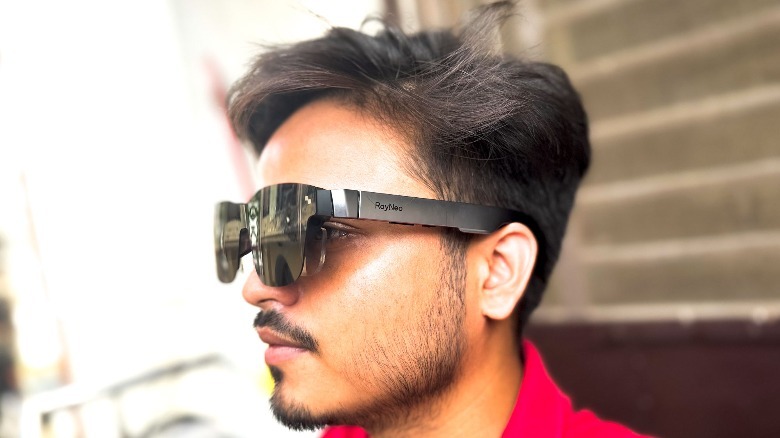
These glasses offer ten levels of brightness control, which is neat. Smart glasses like these are not easy on the eyes, especially for binge-watching sessions, or if you are brave enough, to get some computing work out of them. Optical strain and fatigue seep in pretty quickly. In my experience, especially when you are wearing the Air 2S in a dimly lit are or a dark room, even level 3 brightness got the job done with ease. And if you don’t mind enabling the built-in eye care mode, you visual fatigue tax can be minimized to a healthy extent. RayNeo claims it has dramatically increased the edge clarity and distortion on the Air 2S. Compared to the Air 2, the results are easy to spot.
Advertisement
Optical Shenanigans
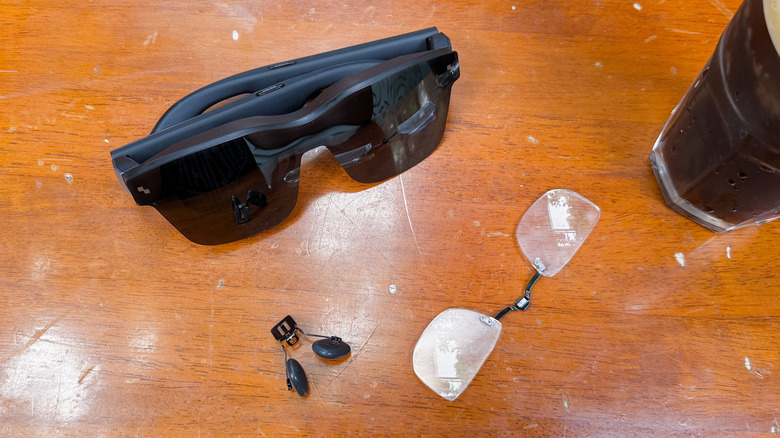
Nadeem Sarwar /SlashGear
Irrespective of whether you are watching videos or working on a computing platform, the screen’s clarity and color profile is impressive. There is minimal peripheral blurring, and the problem with rounded edges has also been addressed to a healthy extent. But some fuzzy edges and slightly warped corner can still be seen. However, despite wearing prescription glass inserts, I noticed that with a bit of adjustment, you can get rid of the edge blurring to a healthy extent.
Advertisement
I handed over the RayNeo glasses to an optometrist for their insights on the situation. They mentioned that each person’s peripheral vision is unique, and pointed me to a research paper published in the Proceedings of the National Academy of Sciences journal that says peripheral vision varies from person to person. In the context of glasses, how sharp the edges look on a micro-OLED panel close to your eyes also depends on whether a person has perfect 20/20 vision or they rely on prescription support for their unique eyesight situation.
So, if I see a slightly fuzzy lower-right corner on a floating window, another person with a different set of eyes and position adjustment of the glasses may not see it, or encounter clarity problems on a different position. I wish there was Diopter adjustment facility on the Air 2S in the same vein as the Viture One series. But on its own, RayNeo has done an impressive job with reducing ghosting and blurriness. In my case, I frequently had to adjust the glasses to reduce what is most likely my own blind post alongside the right peripheral view.
Advertisement
A few hiccups
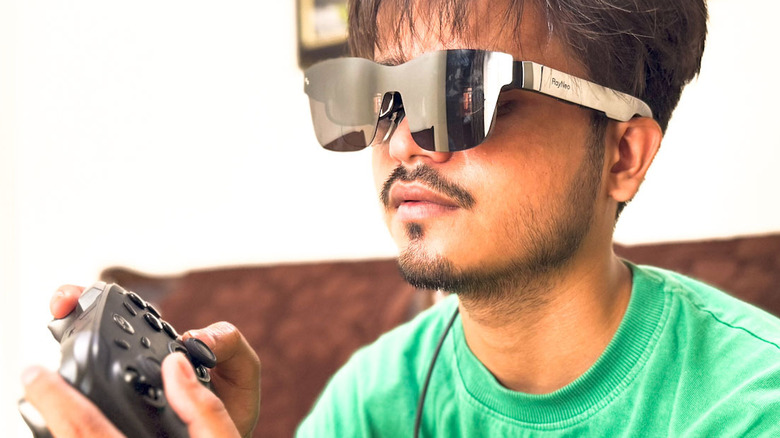
Nadeem Sarwar/SlashGear
RayNeo has partnered with Lensology to supply prescription lens inserts for the Air 2S. Do keep in mind that the format is not reverse compatible with Air 2, or any other TCL or RayNeo smart glasses for that matter. Lensology ships across the world, but I ran into logistic woes to get mine shipped. RayNeo provides dummy inserts in the retail box, so you can get your own pair made at a local outlet. However, there’s still some risk of damage to the frame or loose alignment issues when replacement glasses are fitted. I had one such incident and had to buy a fresh pair of lens inserts which were then fitted with prescription glasses.
Advertisement
But the problems don’t end there. For starters, RayNeo’s companion app on mobile doesn’t let you tweak the distance or size of the virtual screen, which is a huge letdown. Xreal, on the other hand, offers a ton of rewarding adjustments. You can’t even adjust where the laser pointer shows up for the RayNeo Air 2. The app is missing basic spatial controls that should be a must-have, unless you only want them for watching videos.
Then there’s the virtual screen itself. Even though it supports 3DoF (Degrees of Freedom) head movement, it frustratingly cuts off parts of the screen, especially along the bottom edge. This means you’ll have to move your head around all the way down to access those controls when you’re in desktop mode. And just like Air 2 situation, once again, the app is running short on XR content. Whether you’re into games or videos, the content available is painfully scarce.
Advertisement
The bright side
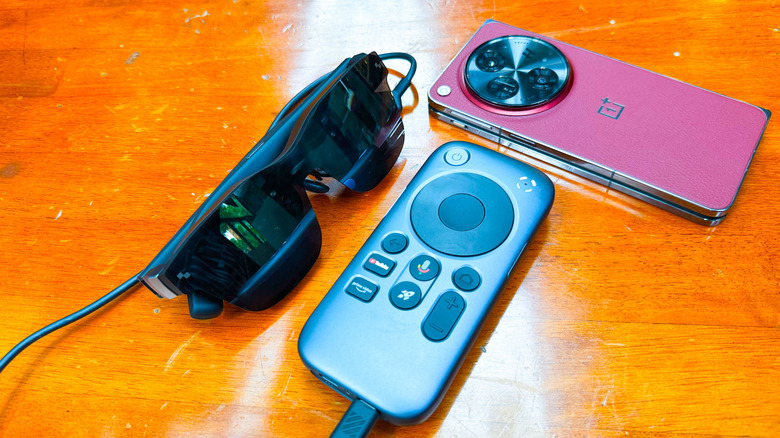
Nadeem Sarwar/SlashGear
Unlike the usual two-speaker array you will find on a majority of smart glasses out there, the Air 2S comes with a four-speaker array, a pair of them (bottom and top-firing) on each steam. As far as quality goes, they sound noticeably better than their predecessor. The soundstage seems wider, with increased depth and higher clarity as well as loudness output. The whisper mode, which effectively makes the speakers mute for any person beyond the 20 centimeter range, also does its job fairly well. But when you enable it, there is some expected crushing of vocals and a narrower instrument profile. It’s not terrible, but not great for indulging in music either. For watching films or listening to screaming teammates in Call of Duty: Mobile, these speakers have plenty to offer and will serve just fine.
Advertisement
You don’t get anything fancy like the Xreal Air 2 Pro’s electrochromic glass to change the visibility of the external shades. RayNeo has gone with a dark shade of glass with a reflective coat on top. An unintended benefit of such an approach is that light from the opposite doesn’t pass through. Even in a well-lit room during day time, you can comfortably watch content on the micro-LED units or get work done without having to see passthrough shadows. The area around the virtual floating screen appears dark, which further adds to the sense of immersion. But do keep in mind that the glasses don’t save the brightness levels. So every time you connect them to a device, you will have to reach for the brightness adjustment button on the right stem.
Advertisement
Compatibility and accessories
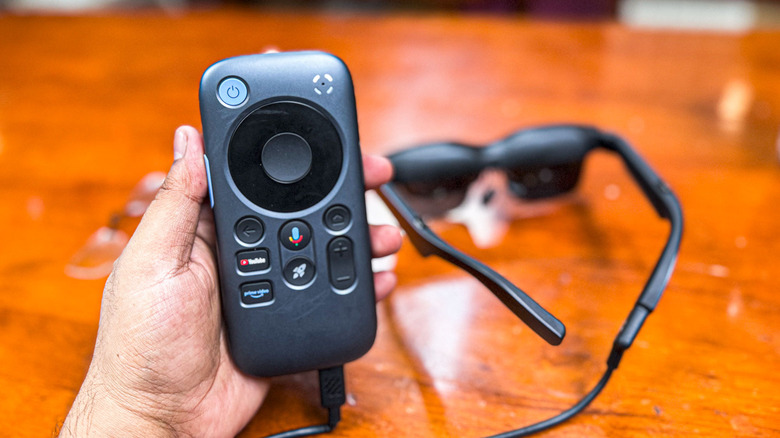
Nadeem Sarwar/SlashGear
It’s USB Type-C utopia, and the RayNeo is ready for it all, as long as the your devices support Display Port (DP) output. For Windows machines, Macs, iPad Pro, and the new iPhone 15 Pro, it’s a plug-and-play situation. No weird input adapter thingamajig required. But if you must buy an adapter, such as for iPhones with Lightning port, do keep in mind that 3D playback won’t work as it requires direct connection. Also, 3D-2D switching only works when the Air 2S glasses are in projection mode using the mobile app. For gaming consoles such as the Nintendo Switch, you have to cough up extra cash for the dock.
Advertisement
Talking about accessories, the clunky «Mirascreen» casting hub is gone. For the Air 2S, RayNeo sells an excellent Pocket TV hub that costs $100. It has fantastic clicky buttons and runs the full-fledged Google TV, bringing all your entertainment and streaming apps in one place. This one also adds nifty zoom in/out choices, scaling options, color format adjustment, and frame rate / refresh rate syncing. The Air Mouse is another neat addition, and it works better than the mobile app’s laser pointer. However, playback is limited to SDR (HDR and Dolby Vision listed as unsupported).
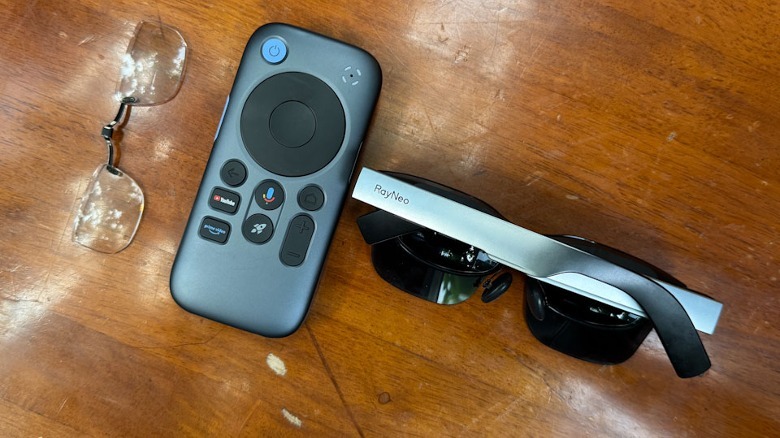
Yes, you need internet connection for streaming. But the Pocket TV hub lets you pop in a microSD card of up to 2TB capacity. The onboard 64GB storage is also good enough for taking a few TV Series seasons and films offline for local watching. The onboard 6,500 mAh battery consistently delivered over 4 hours of video watching experience on a single charge, but RayNeo claims it can pull over five hours.
Advertisement
Should you buy them?
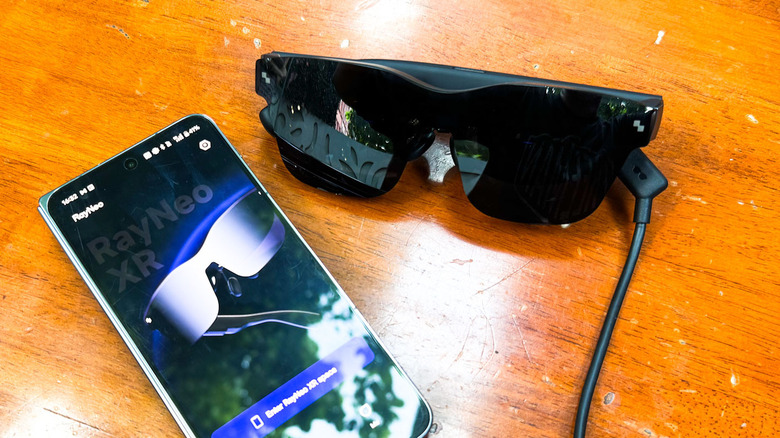
Nadeem Sarwar/SlashGear
The RayNeo Air 2S isn’t too different from its predecessor, and that’s both good and bad news. The latest iteration fixes some crucial display issues, amps up the brightness, and makes a few thoughtful tweaks to the design. The quad speaker setup is another welcome upgrade. The Air 2S got plenty of aesthetic pizzazz going on for them, and will certainly appeal to folks with a taste for sporty looks. Physical controls for refresh rate, 3D/2D switch, and display profile are a convenient touch, as well.
Advertisement
However, RayNeo needs to address the software situation, and desperately so. The mobile app can’t quite nail the basics like laser pointer movement accuracy and doesn’t offer much in terms of display adjustments. The absence of macOS support is another drawback, and the Windows spatial computing experience also has gaping functional holes. The saving grace, however, is the terrific Pocket TV accessory.
If your primary requirement is pair of glasses that offer a crisp and bright display for watching videos, you can safely plonk your cash on the RayNeo Air 2S. But if you are looking for facilities like versatile spatial computing, diopter adjustment, or glass dimming, you should be looking elsewhere. The Viture One Lite is a reliable alternative, while the Xreal Air 2 has a rewarding software and acceptable set of features. The former costs a bit higher, and so does the XReal Air 2 Pro, so you might want to factor that in for next your shopping spree.
Advertisement
Xreal Air 2S glasses are now up for grabs from the company’s official website at $399.99, and Amazon, as well.